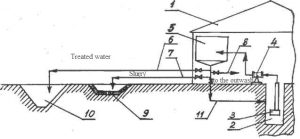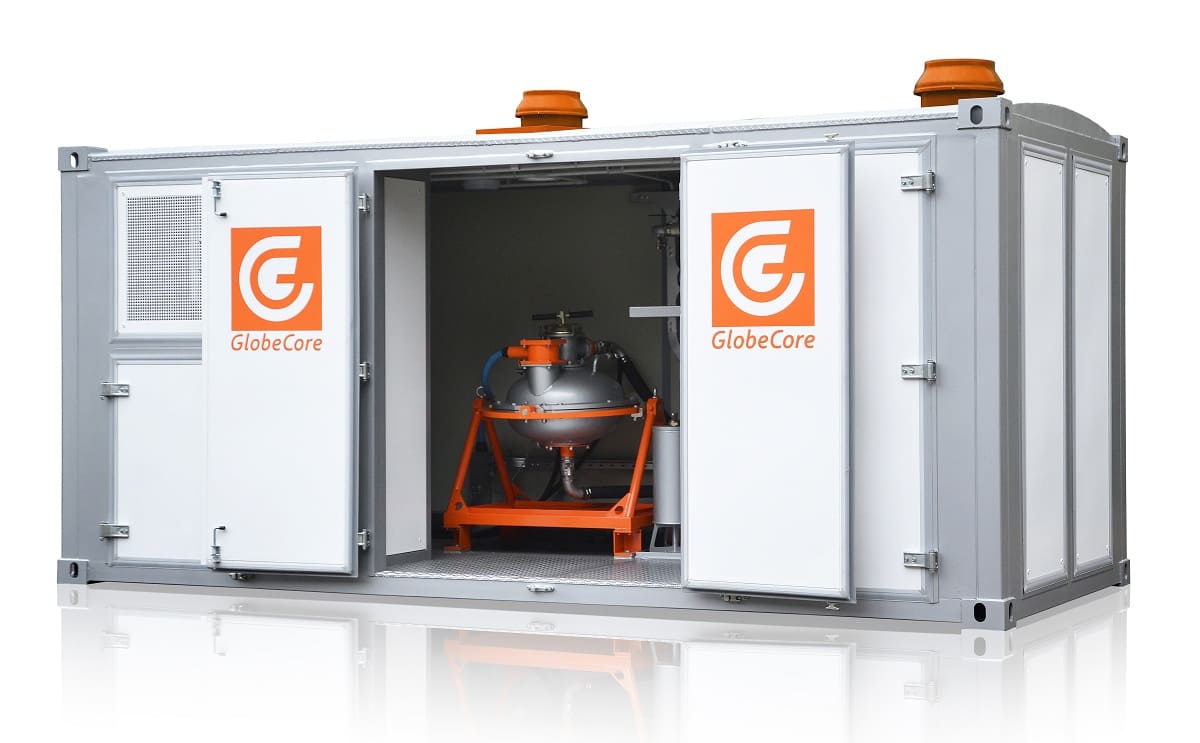Manure treatment in a small pig farm
The manure processing on a small livestock farm is very differently equipped, and uses different materials, etc. The traditional system for manure processing is simply not available to small farms due to small amounts of manure.
Therefore, manure is often taken out manually and folded outside without any system or transported at best to the fields. This applies only to the manure of cattle and poultry. Manure from pig farms can not be used at the fields.
The above mentioned AVS treatment of wastewater, in general, is designed for large farms. However, this method can also be used on a small farm. For example, a small farm has about 500 pigs. It is equipped with a high pressure washing of manure and a reservoir with a pump, that forms 3-5 m3 of sewage a day, which is exported 2 to 3 times a week to random places. Sewage is not analyzed, their consistency varies within a wide range
The manure processing provides:
- Neutralization of manure.
- Separation of water and solid fraction.
- solid manure fraction is stored on a solid manure pad for drying and subsequent use as a fertilizer.
- Draining of purified water into a receiving pit for organic irrigation.
- Reduction of transportation costs.
The scheme of the technological line is shown in Fig. 1

Fig. 1. Flow chart for wastewater treatment in a small pig farm (with hydro washing):
1 – Farm; 2 – Collection of manure; 3 – pump; 4 – AVS; 5 – sedimentation tank; b-Discharge line for purified water; 7-Discharge line for neutralized sludge (sediment); 8 – Clean water line for washing manure; 9 – Sludge paddock; 10 – Ditch; 11 – Back line
The line is equipped in accordance with the farm size and a minimum of pipelines.The equipment can be transported and used anywhere.
The cleaning system works as follows.
The manure is accumulated in reservoir 2 to the top. Additives are added and stirred manually. The pump 3 delivers the mixture to the AVS. At the same time the oxygen is supplied by a compressor or a fan (not shown). The treated manure enters tank 5, from which, after aging, the neutralized sludge (sediment) is directed to sludge pad 9, and the purified water is discharged into ditch 10. The bulk of purified water goes back to the farm, to pressure wash manure through pipeline 8. There is another way.
The manure accumulates in reservoir 2, The additives and oxygen are added, and the mixture is pumped through the AVS. Usually there is a sediment at the bottom of a reservoir, which must be diluted with water with a few reagents and passed again through the AVS with pump 3. The second lot of the treated manure is also sent to tank 5. Then, on the return line, the manure from tank 5 is sent to reservoir 2 and pumped through the AVS by pump 3 into tank 5. These operations should be carried out until the odor disappears. Given the high productivity of the AVS, the treatment of manure, therefore, continues 2.5 – 3 hours once a day. Then the manure is pumped into the tank 5, where it is kept for 10-20 hours. Where it settles into liquid and sludge. The clarified liquid can be discharged into ditch 10 or used for irrigation, and the sludge (less amount) – onto sludge pad 9. The sludge layer is less than 5 cm. It dries quickly and can be used as a fertilizer.
The quantity and types of additives are presented in Table 41. The measure was a bucket, which holds 5-7 kg of lime.
The equipment installation requires a supply of service water for cooling the inductor of the AVS, with the consumption – about 1-3 m3 / h. Pipes can be replaced with hoses with the same capacity.
When using artesian water, it is advisable to provide a circulating system.
Table 1
Consumption of additives for manure disinfection in a small pig farm (the amount of manure is 3-5 m3 / day)
| №
|
Additives | Units of measure | Consumption | Notes | ||
| for 1
m3 |
For 1 month | For 1 year | ||||
| 1 | Lime powder | Bucket kg | 1
5-7 |
30-40
175-280 |
360-480
2100- 3400 |
Replaced with caustic potassium or chloride lime |
| 2 | Lime chloride | bucket | 1 | 30-40 | 360-480 | According to need |
| 3 | Hard potassium | kg | 2-3 | 70-110 | 840-1300 | Replaced with lime or chl. lime |
| 4 | Formalin, a solution | l | 2-3 | 70-110 | 840-1300 | |
| 5 | Oxygen | Nm3 / ball | ОД | 3-4 | 43-48 | 1 bottle is consumed for 40-50 m3 of manure |
| 6 | Atmospheric air | Nm3 | 5-6 | |||
The described low charts can be used in small enterprises with 3 – 100 m3 / day of wastewater. The equipment is selected and adjusted accordingly.
There are a lot of such enterprises in the country, such as health resorts, temporary camps for military personnel, children’s summer camps, etc. All of them cause damage to the environment and urgently require the wastewater treatment systems. The AVS can solve this problem.

